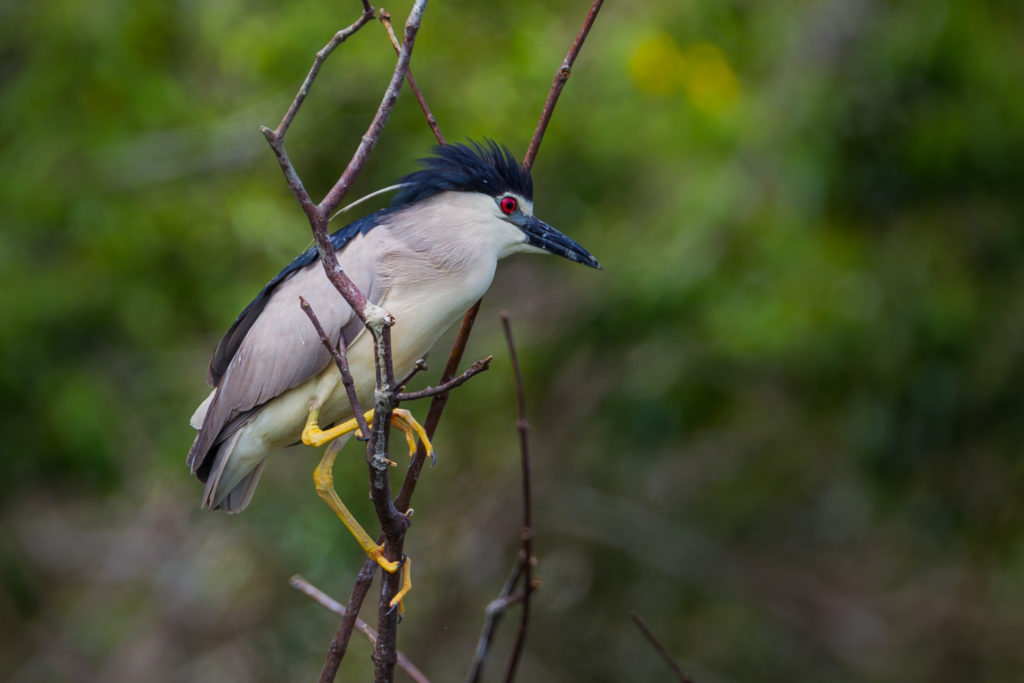VITAL SIGNS
- Common name: Black-crowned Night-Heron, Bihoreau gris (French)
- Latin name: Nycticorax nycitcorax
- Range: Year-round resident in South America and the Caribbean, wintering in Mexico, breeding range mainly in the United States, South-western Ontario and parts of Manitoba, Saskatchewan and Alberta
- Lifespan: Around 20 years, oldest female was 21 years 5 months
- Size: 58-66 cm in length with a wingspan of approximately 115-118cm, typically weighs 727 – 1014 g
- Population estimate: Approximately 10,000 – 25,000 breeding birds in Canada3,
THE FACTS
Black-crowned Night-Herons are larger than their cousins, the Green Heron, and have stockier legs than Great Blue Herons. These short-distance migrants can be found in wetland habitat, marshes, lakes and rivers across North America and socially nest together in trees with a clutch size of around three to five eggs3. Immature individuals look much different from mature herons as their colouring is mostly brown with white spots and yellow eyes. Once they reach maturity they can be identified by their thick necks, defined dark back and head as well as red eyes.
Offspring typically leave their nest after 1 month and begin to learn to fly when they reach six weeks2. Their diet consists mainly of worms, insects, mussels, clams, crustaceans and any other plant or animal material typically found along shorelines or near their nesting habitat2.
When they aren’t nesting, searching for food, or looking for a mate you can find Black-crowned Night-Herons in colonies with other heron species and egrets. What makes them so special, is they are nocturnal migrants who hunt at dusk, dawn and during the nighttime hours1.
THE STORY
Black-crowned Night-herons have a relatively stable population in Canada and North America since the 1970s after the banning of DDT3. However water pollution, habitat loss, climate change and other persistent pesticides still negatively impact this species’ abundance. The National Audubon Society’s interactive map demonstrates how the Black-crowned Night Heron’s range may shift with various global temperature warming scenarios, which can be viewed here.
WHAT IS BEING DONE
Globally, the International Union for the Conservation of Nature has just designated this species as Threatened as of 2016 after being previously listed Least Concerned for many years prior, indicating that these herons are facing additional pressures and need more conservation efforts to support their populations.
In partnership with Environment and Climate Change Canada, the Black-crowned Night Heron is a Priority Species within the Bird Conservation Region Strategy (BCRs)3. Wild Species Canada has listed their population as ‘Secure’ since 2010.
